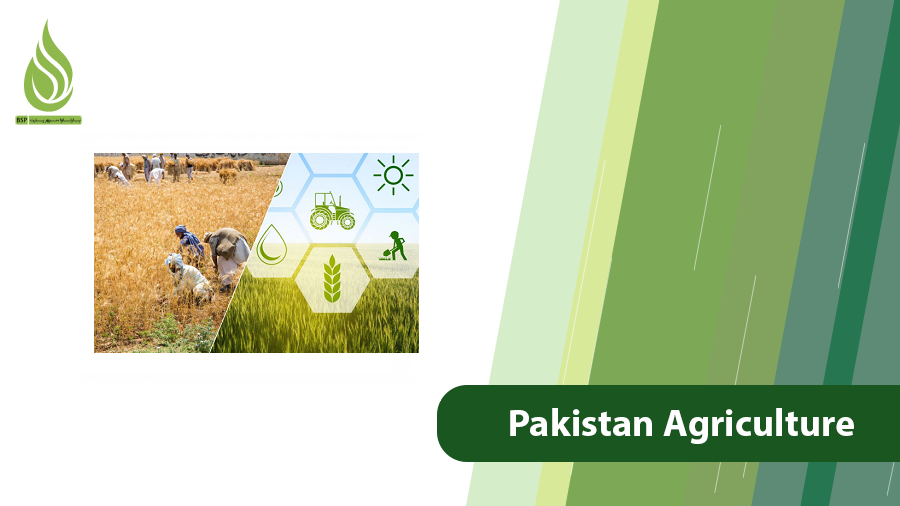
Agriculture in Pakistan Faces Several Major Challenges!
Agriculture stands as one of the foundational pillars of Pakistan’s economy. This sector not only provides food for the nation’s rapidly growing population but also serves as a primary source of employment and income for millions of people. However, Pakistan’s agriculture is grappling with serious challenges that pose threats to food security and the country’s sustainable development. In this article, we’ll dive into the key challenges facing agriculture in Pakistan and explore practical solutions for them.
The Importance of Agriculture in Pakistan’s Economy
Agriculture is a cornerstone of Pakistan’s economy, employing about half of the labor force and contributing roughly 24% to the gross domestic product (GDP). More than 40% of the population depends directly or indirectly on this industry for their livelihood. Beyond ensuring food security, agriculture plays a vital role in exports and job creation. When farming thrives, it boosts related industries like transportation, packaging, and export services. Yet, despite its significance, the sector faces mounting obstacles that jeopardize future food security and long-term economic growth.
In the past, Pakistan was among the world’s top producers and exporters of rice, cotton, wheat, and sugarcane. Today, however, much of the economic activity has shifted toward the textile and garment industries, leaving agriculture somewhat sidelined. Factors such as water shortages, climate change, and soil nutrient deficiencies are among the primary hurdles for Pakistani farmers. Advancing agriculture in Pakistan isn’t just about sustaining livelihoods; it’s essential for fostering sustainable economic growth.
The main agricultural products in Pakistan include rice, cotton, wheat, corn, and sugarcane. In recent years, production of these crops, especially wheat, has seen a sharp decline. For instance, wheat and rice account for 37% and 11% of the total crop area, respectively, while sugarcane and cotton are major cash crops. According to recent estimates, local production of edible oil has reached about 0.486 million tonnes, showing modest growth driven by expanded oilseed cultivation. Other key crops like maize contribute significantly, with the five major crops, wheat, rice, cotton, maize, and sugarcane, covering substantial portions of cultivated land: 27.89%, 12.48%, 8.99%, 7.21%, and 5.53% respectively. These statistics highlight the sector’s potential, but also underscore the vulnerabilities tied to environmental and infrastructural issues.
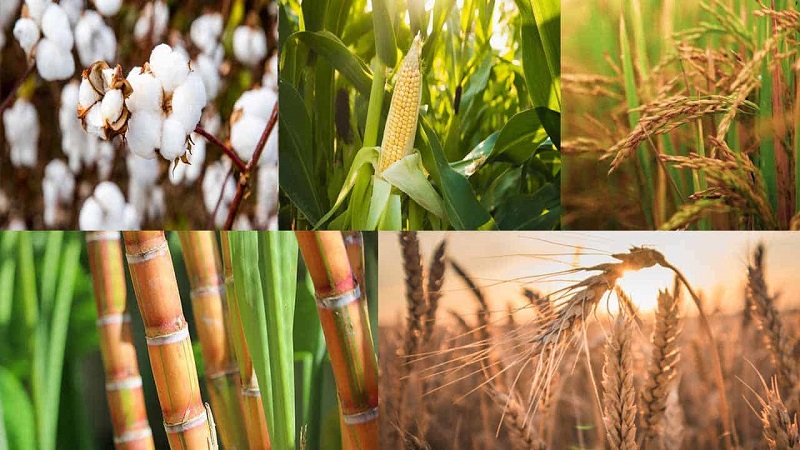
Key Challenges in Pakistan’s Agriculture
The most prominent agricultural products in Pakistan are rice and cotton, primarily grown in the Punjab region. In addition to these, wheat, sugarcane, corn, fruits (especially citrus), and vegetables are widely cultivated across the country. These crops not only meet domestic needs but also serve as crucial sources of income and exports.
Agricultural crises in Pakistan have led to diminished food security. With a growing population and declining crop yields, providing adequate food for vulnerable groups has become a major issue. These crises disproportionately affect lower-income communities, leading to unemployment and social problems.
Water Shortages and Water Management Crisis
Pakistan ranks among countries facing severe water crises, which heavily impacts agriculture. Reduced rainfall, over-reliance on the Indus River, inefficient traditional irrigation systems, and climate change have all restricted farmers’ access to water. The country is rapidly transitioning from “water stressed” to “water scarce,” with annual water availability falling below 1,000 cubic meters per person. This scarcity is exacerbated by rapid population growth, floods, droughts, and poor water management in the agricultural sector.
Recent developments, such as the widespread adoption of solar-powered tube wells, have inadvertently worsened the situation. While intended to reduce dependency on diesel and grid power, these systems have led to over-irrigation, expanding fields, but depleting groundwater at alarming rates. For example, the 2022 floods destroyed 2.4 million hectares of cropland, wiping out food stocks and livelihoods overnight. Ongoing droughts have pushed major reservoirs to dead levels, creating critical shortages that affect crop sowing and yields. Fall farming, which includes summer crops like rice and cotton, has seen a dip of more than 20% due to reduced water inflows. Farmers describe this battle with erratic weather as “gambling with nature,” highlighting the unpredictability introduced by climate-driven extremes.
Soil Erosion and Declining Soil Fertility
In many areas of Pakistan, the soil has become severely eroded and made agriculture difficult. Causes include repeated cropping without rotation, excessive use of heavy machinery, loss of organic matter, and improper practices. This erosion reduces productivity over time. Poor-quality chemical fertilizers and faulty irrigation have led to soil salinization and the depletion of organic materials, further lowering land efficiency and posing long-term threats.
Land degradation affects about 3.58% of the population’s livelihoods in Pakistan. Major causes include water erosion, wind erosion, salinity/sodicity, and waterlogging, impacting around 16% of the land. Soil erosion is one of the most damaging issues, leading to low crop productivity. Environmental degradation, including nutrient depletion and salinization, hampers agricultural output significantly. In rural areas, this degradation is a root cause of poverty, as farmers struggle to benefit from their efforts and support their families. Intensive farming practices have also contributed to farmland degradation, posing health risks and reducing yields.
Climate Change and Its Effects on Crops
Climate change manifests in Pakistan through rising temperatures, erratic rainfall, floods, and droughts. These shifts have decreased crop production and damaged agricultural infrastructure. Crops like wheat and rice have suffered the most.
In recent years, planting of crops, particularly wheat, has plummeted in Pakistan due to weather fluctuations and reduced precipitation. Climate change reduces crop yields, causes water scarcity, degrades soil, and increases pest pressures. Around 23% of land area and 50% of the population are expected to be severely affected. Erratic monsoons, prolonged droughts, floods, and shifting sowing cycles are disrupting farming. Wheat, rice, cotton, sugarcane, and maize are all impacted, leading to food insecurity and altered crop patterns. In high mountain areas, 87.7% of farmers report negative effects like increased diseases and reduced water availability. This also threatens exports, with declining yields in rice and cotton reducing foreign exchange.
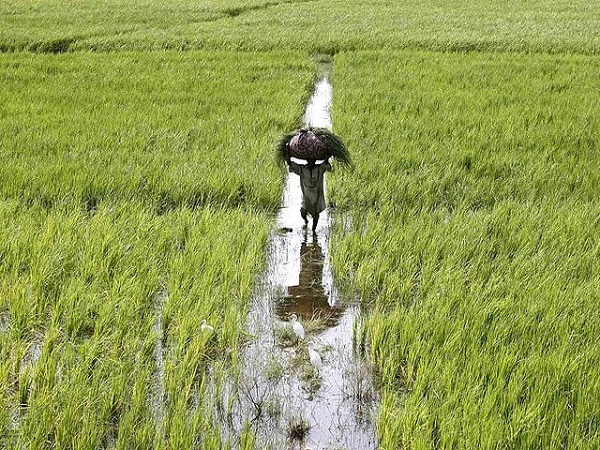
Limited Adoption of Modern Agricultural Technologies
Many Pakistani farmers still rely on traditional tools. In some regions, even drip irrigation isn’t used. Lack of access to modern technologies, machinery, and smart farming methods hinders productivity gains. Seed improvement, pest control, and fertilization practices also need major overhauls.
Outdated practices and low mechanization are key reasons the sector remains underdeveloped. Ineffective land reforms and inadequate investments exacerbate this. Artificial intelligence could help optimize resource use, but adoption is slow.
Shortage of Facilities
Shortages of quality fertilizers, pesticides, machinery, and more represent a significant challenge. Small-scale farmers often lack the funds to invest in upgrades. Banks are reluctant to offer loans due to high risks, and poor infrastructure prevents effective market access for products.
Shifting government policies, insufficient subsidies, and weak farmer education erode confidence in agricultural investments. Supply chain issues, including sourcing and managing contracts, add to the woes.
Solutions to Overcome Challenges in Pakistan’s Agriculture
If these agricultural problems persist, Pakistan could see increased food imports, reduced exports, higher unemployment, and poverty in rural areas. This could heighten food insecurity and even lead to social instability. To mitigate these issues and improve conditions, several strategies are available:
- Optimizing Water Use: Efficient water management and sustainable farming practices can preserve resources and boost production. Modern irrigation methods like drip and sprinkler systems, along with water storage, are crucial. Reviving wetlands and rivers stabilizes ecosystems and soil moisture. Treating urban and industrial wastewater for agricultural use is another key approach.
Preventing water waste through better management is vital for tackling Pakistan’s agricultural challenges. Innovations like those from the International Water Management Institute are turning droughts into opportunities by building resilience.
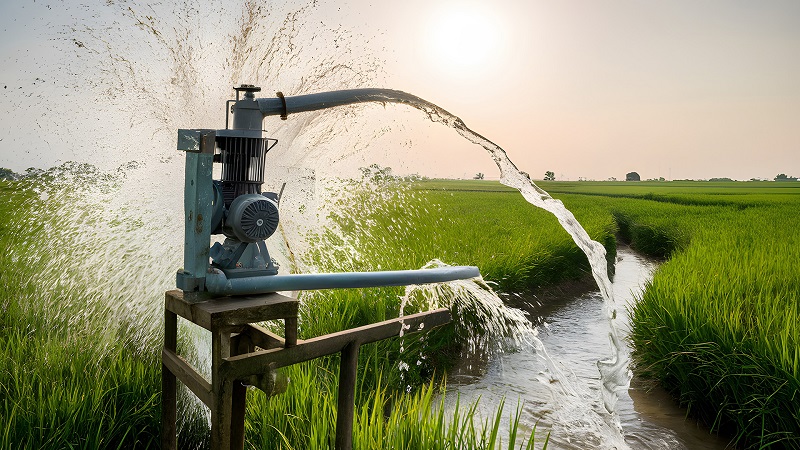
- Soil Improvement: Enhancing soil fertility requires shifting to organic fertilizers. Crop rotation helps prevent erosion.
Strategies include soil conservation, promoting organic farming, and regular testing.
- Advancing Farming Techniques and Technologies: Adopting precision agriculture, biotechnology, and smart irrigation improves efficiency and cuts costs. Training farmers is essential.
Solutions involve innovative agribusinesses, smart farming, and better post-harvest storage. Weather advisories can also enhance outcomes.
- Supporting Farmers: Educational programs correct outdated methods. Financial aid through low-interest loans and credit funds is necessary for small farmers.
- Attracting Foreign Investment: Foreign investment is key to modernizing agriculture. Pakistan’s government is targeting over 9 million hectares of unused land with $3 billion in foreign funds, mainly from China and Middle Eastern countries. A special council facilitates this to improve business environments and boost exports.
In 2025, laws allow 100% foreign ownership in corporate agriculture. Chinese companies pledged $10 billion in MoUs for agriculture in 2024. Gulf investors, like those from Saudi Arabia and UAE, see initiatives like the “Green Pakistan Initiative” as food security opportunities, investing billions in farmland. Pakistan is inviting investments from the US in agriculture and related sectors. Capacity-building programs, such as sending 1,000 agriculture graduates to China, aim to enhance skills. Opportunities include advanced technologies like precision farming and drone surveillance. The government promotes climate-smart agriculture globally, seeking investments in cold chains and value-added products.
- Strengthening Market Infrastructure: Better markets help farmers sell products efficiently. Financial and advisory support improves their economic status.
Using modern tools like precision agriculture and biotechnology enhances productivity and reduces costs.
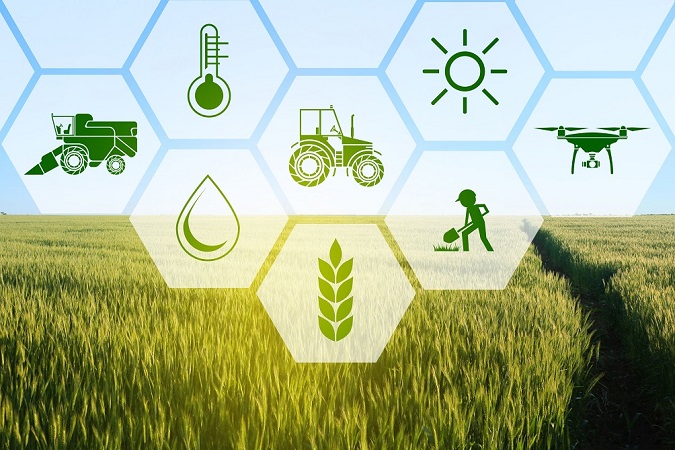
Addressing Soil Salinity and Alkalinity in Pakistan’s Agriculture
One major soil issue in Pakistan is alkalinity, with most soils having a pH above 7 due to climate and geological factors. Soluble salts and low rainfall in some areas worsen this. In certain regions, salty soils drastically cut productivity.
To control alkalinity and salinity, key strategies include:
- Soil Amendments:
- Organic Fertilizers: Adding compost and manure improves structure and reduces alkalinity.
- Chemical Fertilizers: Acidic ones like ammonium sulfate lower pH. Gypsum displaces sodium and mitigates salinity.
- Irrigation Management:
- Timing Irrigation: Early morning or evening to minimize evaporation.
- Using Suitable Water: Fresh or low-salinity water prevents buildup.
- Planting Resistant Crops: Salt tolerant plants like barley, sugar beet, and certain corn types maintain yields. Local research for genetically modified seeds is recommended.
- Soil Monitoring: Regular soil tests guide decisions on pH and needs.
- Improving Drainage: Building underground networks prevents salt accumulation. Surface drains work for heavy soils.
Implementing these can enhance soil quality and boost agricultural productivity, countering alkalinity challenges.
Conclusion: A Path Toward Sustainable Agriculture in Pakistan
Pakistan’s agriculture faces numerous hurdles, but they’re not insurmountable. With proper planning, modern technologies, and government support, the sector can move toward sustainability and growth.
Despite the crises, Pakistan has immense potential in agriculture. Fertile lands, abundant labor, and a strategic location could make it a regional powerhouse if fundamental reforms and sustainable solutions are swiftly enacted. By addressing water scarcity, soil health, climate impacts, and technology gaps, while leveraging foreign investments, Pakistan can secure food supplies, create jobs, and drive economic progress for generations to come.